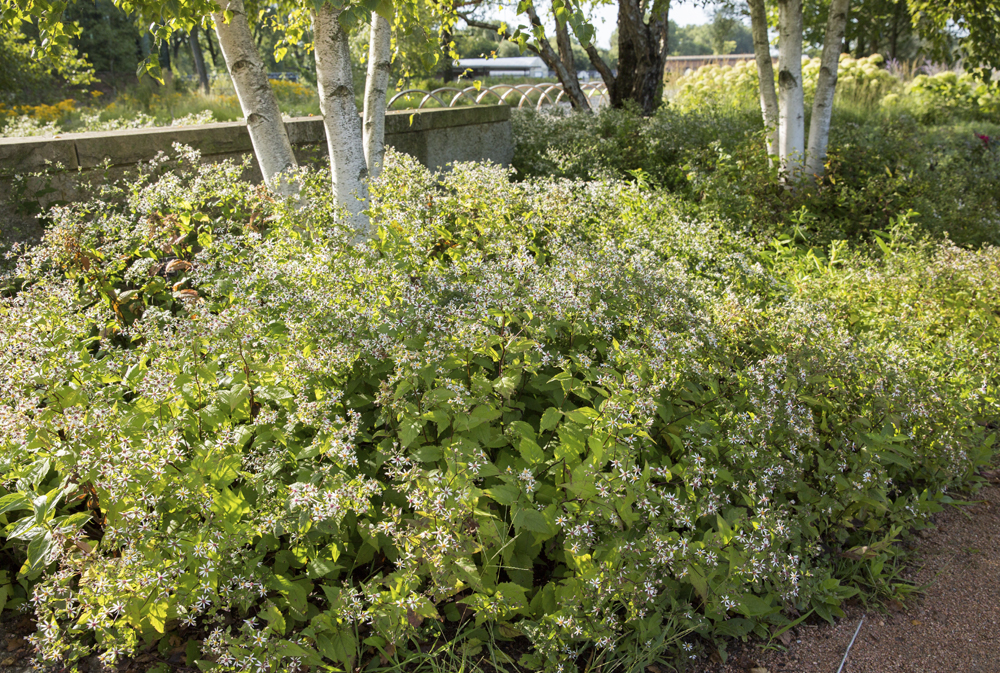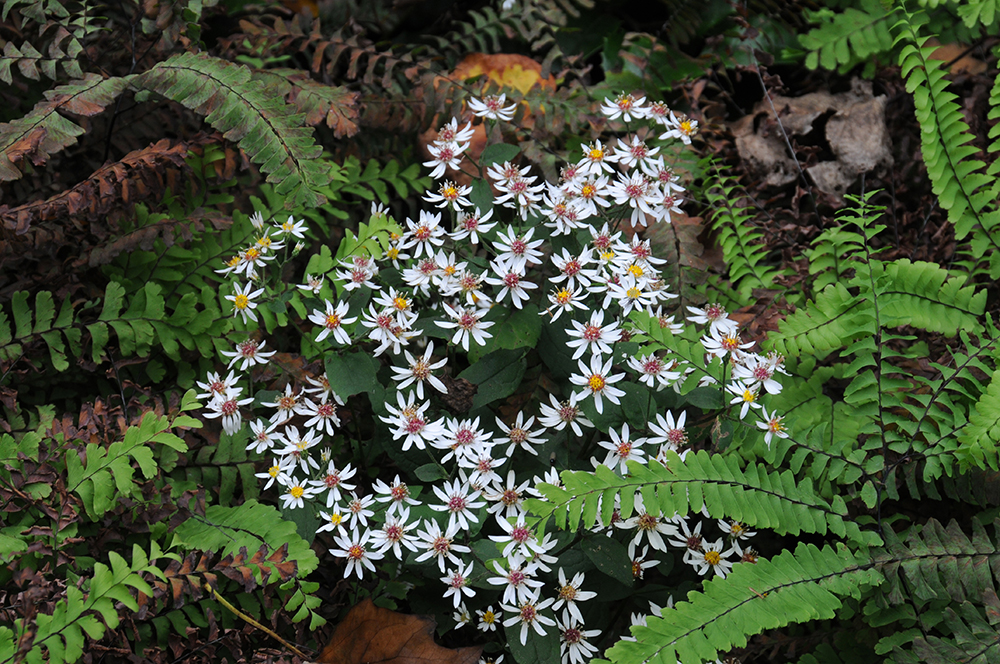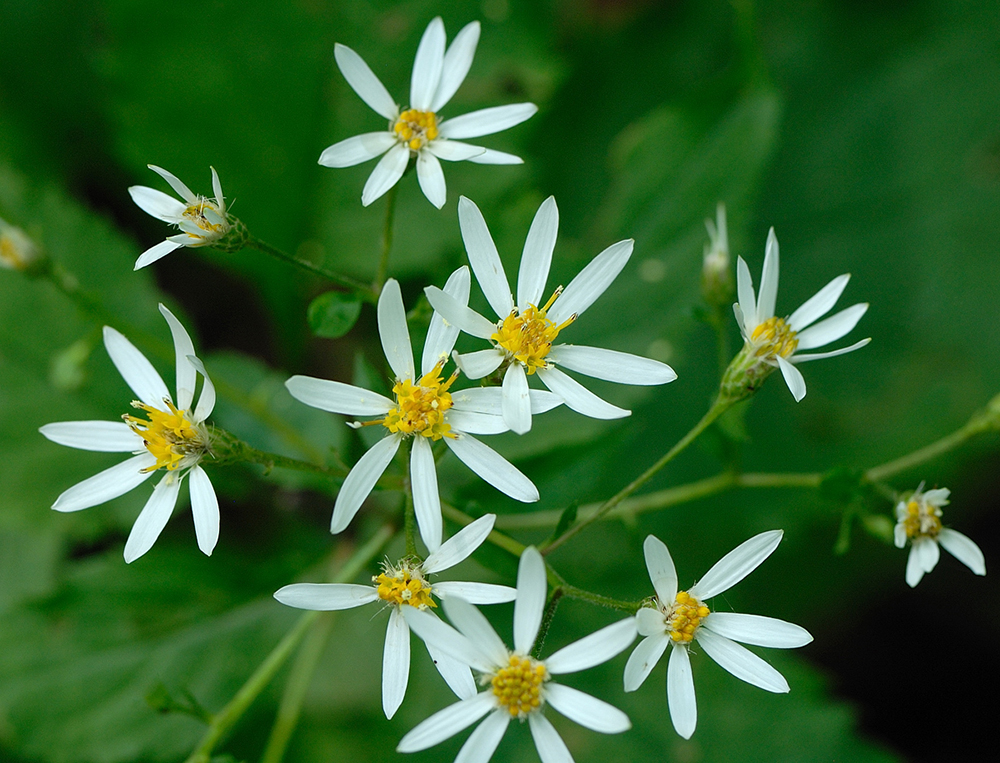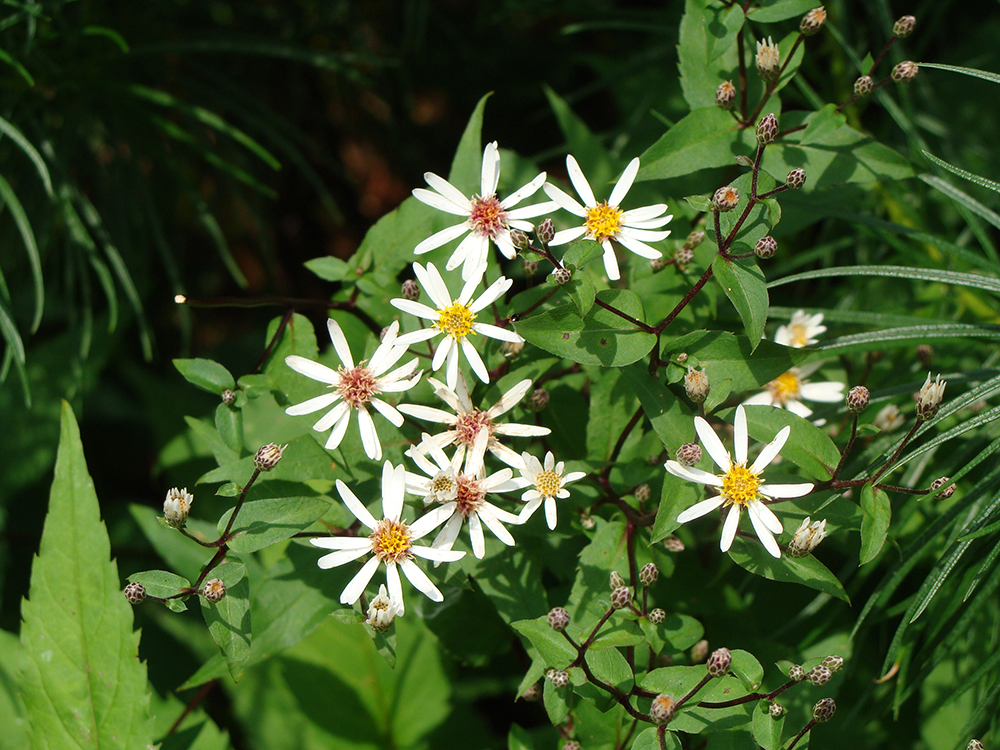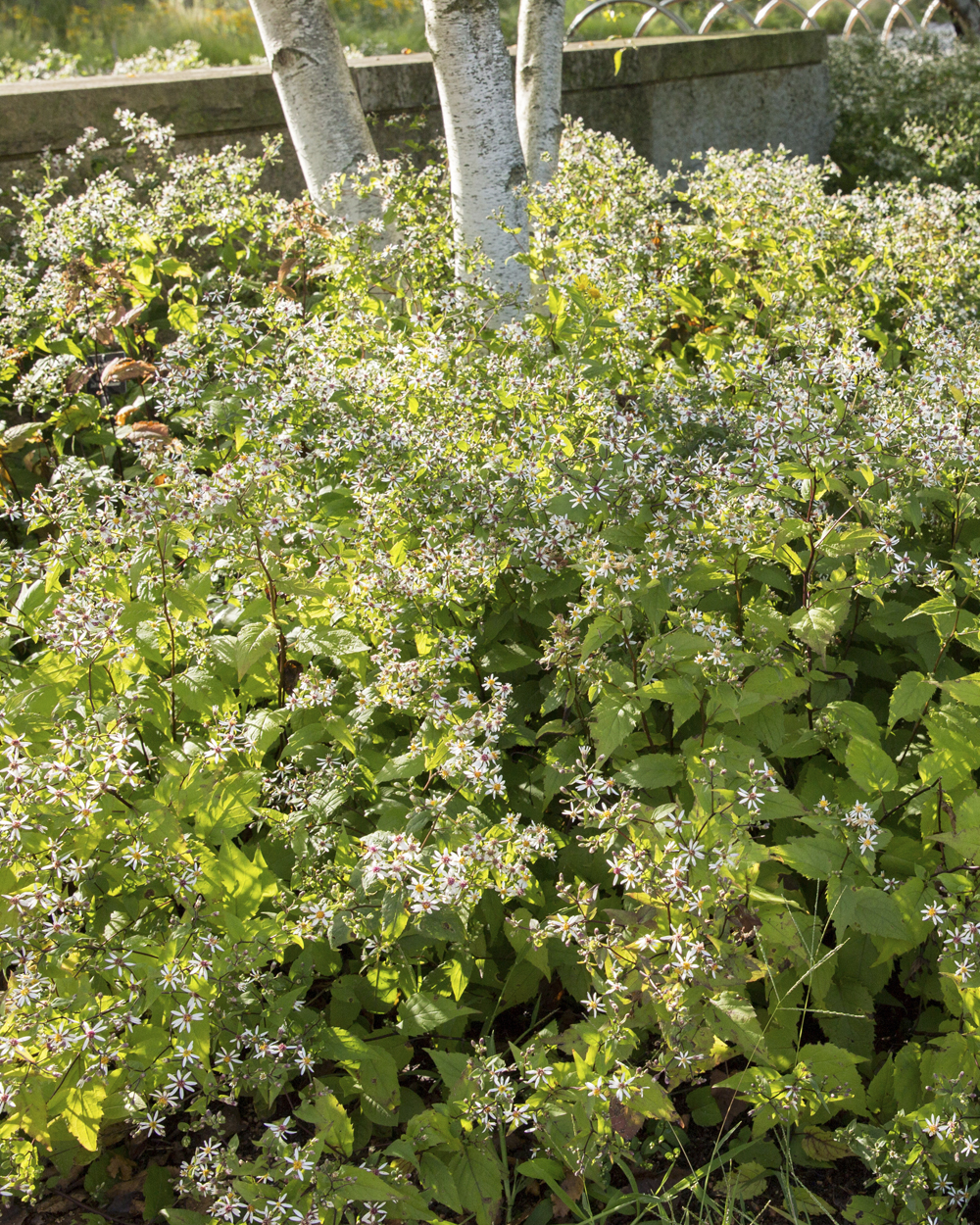Aster divaricatus
(Syn: Eurybia divaricata)
Aster-White Wood
Aster divaricatus
(Syn: Eurybia divaricata)
Aster-White Wood
Native to open woods, this shade-loving, spreading aster is perfectly paired with ferns and sedges. White, star-shaped flowers with yellow to red centers pop against the black stems, forming an airy cloud late in the season. A great late season food source for pollinators, but typically not favored by deer.
Plant Details
- Zone: 3 - 8
- Height: 12-24"
- Spread: 18-36"
- Exposure: Full Shade, Part Shade
- Soil Moisture: Low Water Needs, Moderate Water Needs
- Drought tolerant: No
- Bloom time: Late Summer
- Foliage Color: Green Shades
- Flower Color: White Shades
- Fragrant: No
- Good Cut Flower: No
- Native: Native Species
- Deer resistant: Yes
- Rabbit resistant: No
- Bee-friendly: Yes
- Attracts butterflies: Yes
- Attracts hummingbirds: No
- Groundcover: No
- Roy Diblik Favorite: Yes
Plant Details
- Zone: 3 - 8
- Height: 12-24"
- Spread: 18-36"
- Exposure: Full Shade, Part Shade
- Soil Moisture: Low Water Needs, Moderate Water Needs
- Drought tolerant: No
- Bloom time: Late Summer
- Foliage Color: Green Shades
- Flower Color: White Shades
- Fragrant: No
- Good Cut Flower: No
- Native: Native Species
- Bee-friendly: Yes
- Deer resistant: Yes
- Rabbit resistant: No
- Attracts butterflies: Yes
- Attracts hummingbirds: No
- Groundcover: No
- Roy Diblik Favorite: Yes
Grower Information
Plant your Aster crop in spring for late summer and fall sales opportunities along with Rudbeckia, Eupatorium, Vernonia and fall grasses. Asters are heavy feeders, but it is best to discontinue feeding once they begin to bloom. Pinching is beneficial to promote lateral branching.
- PowerPlug Size(s): 32s
- Optimal Planting Time: Spring
- Retail Sales Window: Fall, Summer
- Moisture in Production: Average
- Requires Shade in Production: No
- Vernalization Required for Bloom: No
- Vernalization Beneficial: Yes

